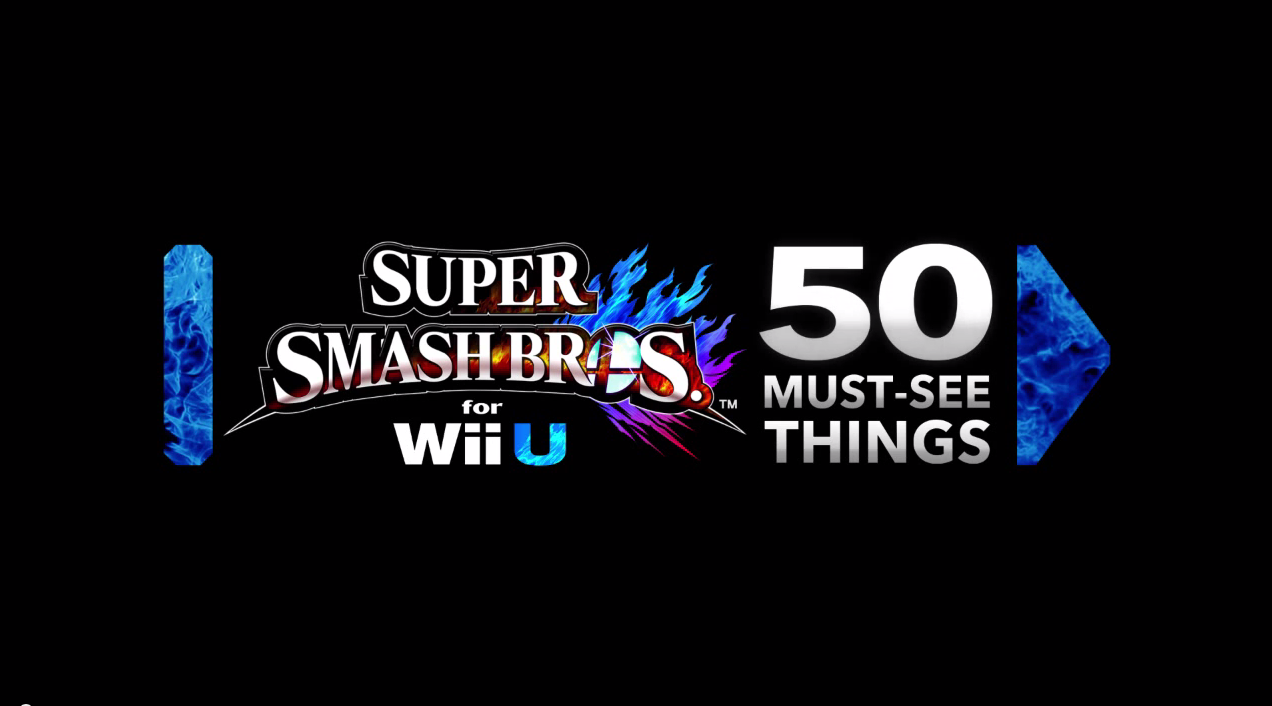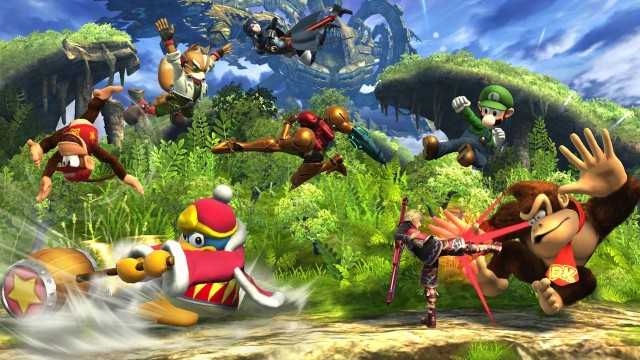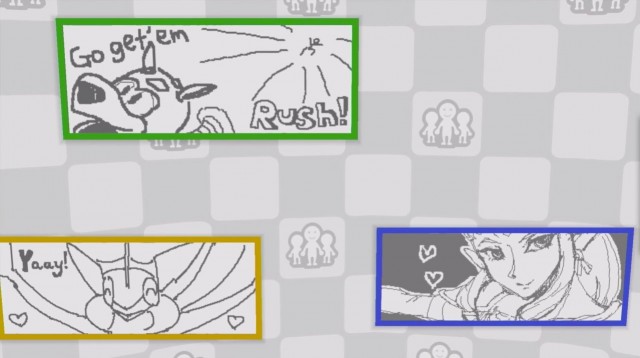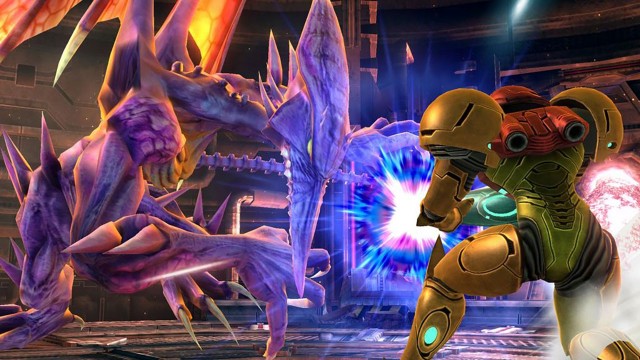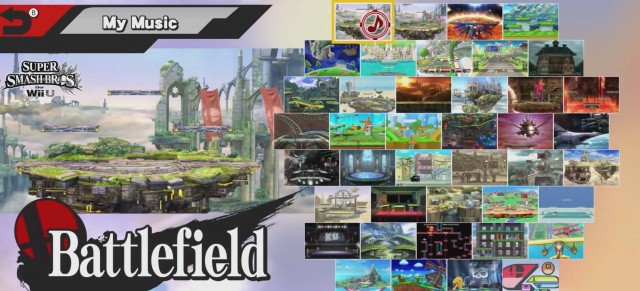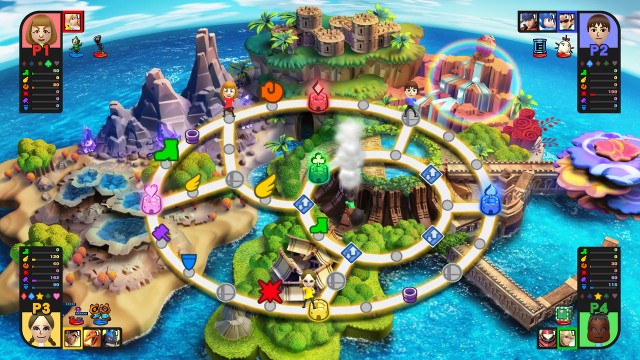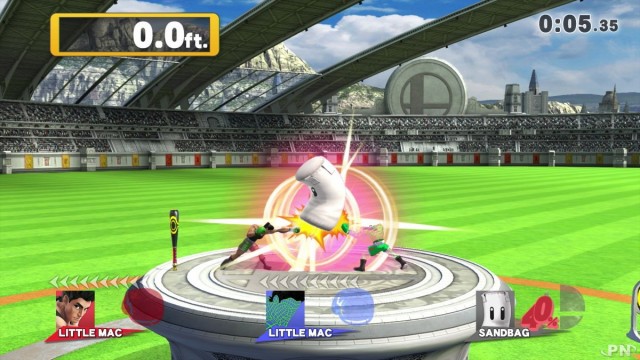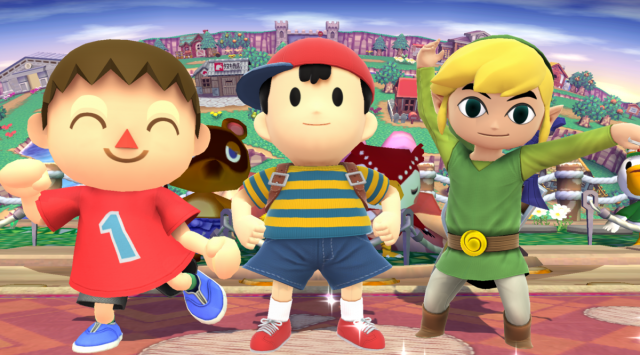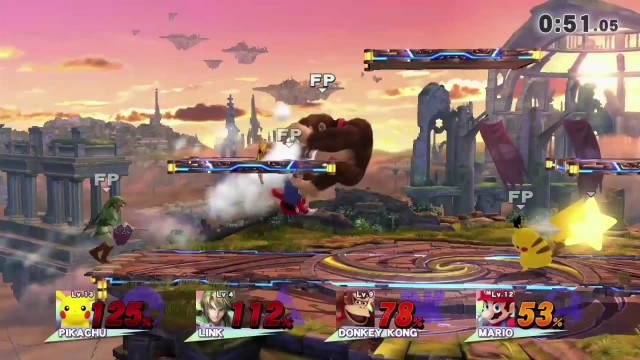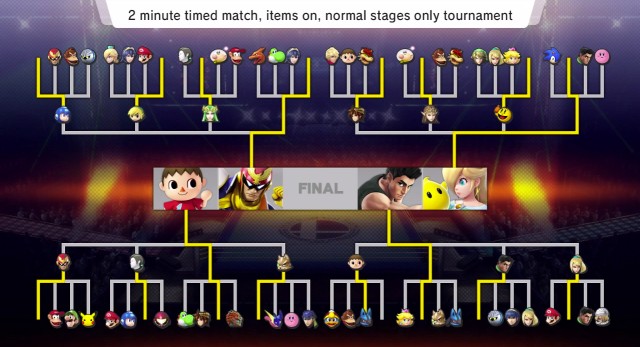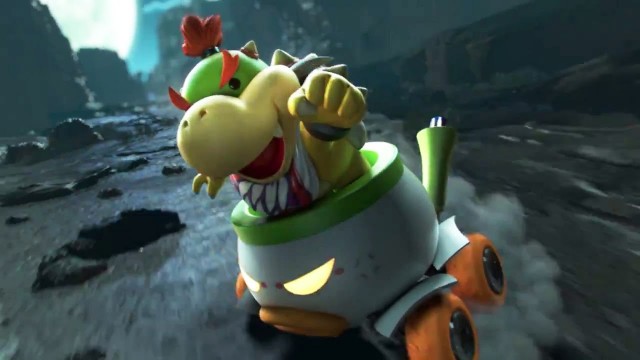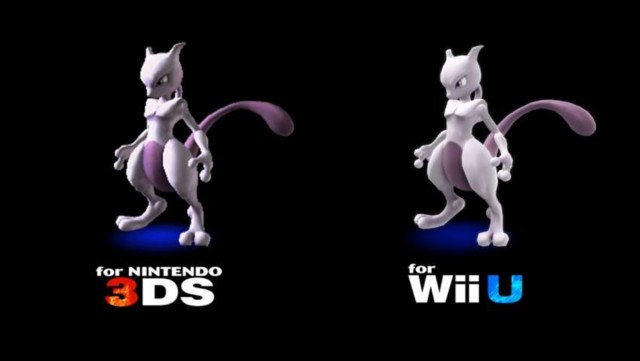Yesterday, Nintendo held a specialized Nintendo Direct presentation, showcasing over fifty facts about the upcoming Super Smash Bros. for Wii U, set to arrive on Nintendo’s console on November 21st. All of these facts detailed features unique or expanded to the Wii U game, as opposed to the 3DS game that released earlier this month.
We’ve gathered up the key tidbits of the presentation, in case you missed it, or only have time to read the highlights. Here’s what you need to know about Nintendo’s Super Smash Bros. for Wii U Fact Extravaganza!
#1 – Over forty unique playable fighters will be available to access from the get-go in Super Smash Bros. for Wii U, including fighters who normally have to be unlocked in the 3DS game, such as Ness and Ganondorf. Naturally however, certain heroes will be available to unlock in the Wii U game, complete with their trademark surprise interrupting of events to challenge your fighter. All movesets for every fighter in the game are completely identical to the movesets of the 3DS game.
#2 – Running at potent native 1080p HD resolution, Super Smash Bros. for Wii U will offer the most detailed and well-realized graphical fidelity in the series’ history. Players can best notice this when they pull the camera out and admire each stage environment.
#3 – For the first time in the series, Super Smash Bros. for Wii U will support up to eight players fighting simultaneously! There will be some limitations however. Eight-player battles are only supported on certain stages, and won’t be available for online play.
#4 – To compensate for the potentially increased player count in local play, Super Smash Bros. for Wii U will boast several larger arenas than ever before. These arenas would not be possible to realize in the 3DS game, since they would make the fighters appear far too small. They’ll also appear infrequently during online matches, since online play is restricted to a lower player count. A larger variation of the series’ competition-friendly Battlefield stage has been added for matches between five or more players as well.
#5 – Larger stages contain ‘Danger Zones’ which will instantly KO a fighter if they come into contact with them after having sustained more than 100% damage. The Great Cave Offensive is an example, based on the labyrinth-like treasure hunting game from Kirby Super Star, where lava pits and spikes can instantly take out fighters who have become too damaged.
#6 – Dual plane battling is also possible, with a stage inspired by Donkey Kong Country Returns being an example. Players can use special barrels to travel between the foreground and background, but if they attempt to do so immediately after using another barrel, the barrel will explode and damage them. To compensate for the background plane’s greater width, fighters will take fly further when they are launched from it.
#7 – Super Smash Bros. for Wii U will feature a larger count of unique stages compared to Super Smash Bros. for Nintendo 3DS. Stages shared between both games will have different stage layouts, and some stages will still be exclusive to Super Smash Bros. for Nintendo 3DS.
#8 – Another stage is in development exclusively for Super Smash Bros. for Wii U, and will apparently be released as some form of DLC. This will be a Miiverse-themed stages, whereupon Nintendo will collect actual Miiverse sketches and messages to cheer on various fighters from the Wii U game.
#9 – To compensate for the omission of Solid Snake from Super Smash Bros. Brawl, Super Smash Bros. for Wii U will now allow Pit to converse with Palutena and Viridi about any fighter he’s up against when playing on the Palutena’s Temple stage, and using his downward taunt. This function essentially takes the place of Snake’s unique CODEC conversations from Super Smash Bros. Brawl. It will also be possible to listen to the Star Fox team in the Star Fox-inspired stages.
#10 – The Xenoblade Chronicles-inspired stage, Gaur Plain is featured in both Super Smash Bros. for Nintendo 3DS and Super Smash Bros. for Wii U, but the Wii U game will exclusively feature Metal Face as a stage hazard when the stage is rendered at night. Not only will Metal Face attack and taunt the fighters, but it will even be possible to KO him!
#11 – The Metroid-inspired Pyrosphere stage will feature Ridley as a stage hazard, but if a fighter can attack him enough, Ridley will join that fighter as a non-playable ally! It’s also possible to turn Ridley into Meta Ridley if you expose him to a special kind of energy, making him even more powerful and dangerous. KO’ing Ridley will also net you a KO point that goes toward your overall score against the other fighters, even if you KO him when he’s on your side! FG-II Graham Units, Joulions and Zeroes will also appear in the Pyrosphere stage, which can be hit or picked up and used to attack other players.
#12 – Along with the expected Time and Stock Battles, Super Smash Bros. for Wii U will exclusively feature Coin Battles! These will allow you to hit and KO fighters to amass Coins, but if you drop, you’ll lose some of your own Coins. This makes for an especially accessible mode for more casual players.
#13 – Stamina Battles will also be exclusively featured in Super Smash Bros. for Wii U, giving players a limited amount of HP. Players will lose the match when they take too much damage and run out of HP, more akin to other fighting games.
#14 – Another play mode exclusively featured in Super Smash Bros. for Wii U is Special Smash, which allows you to tweak rules like the players’ size, whether or not they’re metal, or giving them other special conditions like always having a Spicy Curry equipped. Special Smash matches won’t affect your records, and are simply meant to goof off with and enjoy.
#15 – Super Smash Bros. for Wii U will exclusively allow you to toggle item appearances, whether you want them to appear more or less frequently, or never, and regardless of which items you wish to tweak.
#16 – Super Smash Bros. for Wii U exclusively contains a function called ‘My Music’, which allows you to tweak how often you want certain songs to play in the game’s various stages, and allows you to dictate the rate that music changes.
#17 – You can also toggle the basic menu music to whatever you would like, if you’re especially attached to the menu themes from Super Smash Bros. Melee or Super Smash Bros. Brawl for example.
#18 – Super Smash Bros. for Wii U will feature many times more music from throughout Nintendo history compared to Super Smash Bros. for Nintendo 3DS. Not only that, but almost all of the music from Super Smash Bros. for Nintendo 3DS will also be a part of the massive soundtrack options in Super Smash Bros. for Wii U.
#19 – Super Smash Bros. for Wii U will be including several additional game composers for the music, along with all of the returning artists from Super Smash Bros. for Nintendo 3DS.
#20 – Similar to Super Smash Bros. Brawl, players can amass collectible in-game CD’s to unlock more music for the game while fighting across various play modes. CD’s can also be a reward for accomplishing certain challenges.
#21 – Challenges will task you with filling out a large screen’s worth of spaces that depict challenging feats. The Wii U game will have all of its challenges on a single screen, essentially functioning as a game-specific achievement system. Only by completing challenges can you reveal the challenge conditions for subsequent spaces.
#22 – Classic Mode has been tweaked a tad in Super Smash Bros. for Wii U. Unlike Super Smash Bros. for Nintendo 3DS, where you chose from multiple paths of fighter progression, the Wii U game will automatically dictate your path, depending on your level of skill and tendency to survive matches. Rivals may also periodically interrupt your progression for special matches, along with hidden challengers that will help you unlock new fighters. Adjusting the Intensity (read: difficulty level) will present greater risk, but may also elicit greater rewards. Classic Mode now also supports two players in Super Smash Bros. for Wii U.
#23 – Clearing Classic Mode or All-Star Mode with a certain fighter in Super Smash Bros. for Wii U will unlock that fighter’s exclusive outro movie, with each fighter having a unique outro.
#24 – Whereas Super Smash Bros. for Nintendo 3DS had players taking on fighters in All-Star Mode from oldest to newest, Super Smash Bros. for Wii U’s All-Star Mode goes in the opposite direction, having players battle fighters from newest to oldest. Like Classic Mode, All-Star Mode also newly supports two players in Super Smash Bros. for Wii U, with the interim environments being redesigned, and featuring the trophies of fighters you’ve already defeated.
#25 – Super Smash Bros. for Wii U will feature an Event Mode that works similarly to the Mission Mode from Super Smash Bros. Melee, challenging players to beat specialized matches with various fighters, under unique conditions. Once again, certain Event Mode battles will also support two players, and are specifically tailored for co-operative objectives.
#26 – To complement the Smash Run Mode that is exclusive to Super Smash Bros. for Nintendo 3DS, Super Smash Bros. for Wii U will feature a Smash Tour Mode for up to four players, where players use their Mii’s to compete on a Mario Party-style game board. As they move around the board, players will collect fighters, as well as boosting their stats with power-up items similar to those in Smash Run. When two players land on the same space, every fighter will be pulled into a match with the fighters and power-ups they’ve collected. Defeating players allows you to steal one of their fighters for yourself. At the time of the final battle, players will play a Stock Match, with their stock being any fighters they’ve collected, powered by all of the enhancements they’ve collected.
#27 – Target Blast has seen some tweaks in Super Smash Bros. for Wii U, compared to Super Smash Bros. for Nintendo 3DS. The second bomb you launch is now bigger and heavier for example, on top of generating a bigger explosion when you knock it away to hit targets. There will be three types of Target Blast stages, and player scores will affect their Global Smash Power.
#28 – Stadium challenges, including Target Blast, now support up to four simultaneous players in Super Smash Bros. for Wii U! Home-Run Contest can now also be played co-operatively between two players.
#29 – Master Orders and Crazy Orders are being introduced as all-new play modes in Super Smash Bros. for Wii U. Players can attempt challenges depicted on disposable tickets that they get one shot at. If they accomplish the task laid out for them, they’ll earn rewards. Master Orders follows these simple directions. Crazy Orders works a bit differently, having players spend in-game gold, or use a pass just to attempt it. Crazy Orders then has players fight as many battles as they can, with increasing difficulty, under a time limit. When you think you’ve had enough, you take on Crazy Hand, and if you win, you get to keep any rewards you’ve earned. Lose however, and everything you’ve amassed will be taken from you.
#30 – If you defeat Master Hand in Classic Mode with high enough Intensity, you’ll get a shot at an all-new potential bonus challenge from Master Core, Master Fortress, who has a chance of appearing if you win with the Intensity set high enough. You will need to venture through a dungeon-like environment to hit its weak points and successfully defeat it.
#31 – Super Smash Bros. for Wii U supports more controller options than any other game in the series’ history, or any Nintendo console game in general! Players can not only use the Wii U Gamepad or a Wii U Pro Controller, but also a Classic Controller, Classic Controller Pro, Wii Remote Plus, Wii Remote Plus and Nunchuk, GameCube Controller, or even a Nintendo 3DS/2DS handheld! Button settings can also be toggled for any of these input options.
#32 – GameCube Controllers can be used in Super Smash Bros. for Wii U with the aid of the GameCube Controller Adapter, which has four GameCube Controller slots available, and can be plugged into a USB port on the Wii U console itself. The adapter will naturally be sold separately. Nintendo also plans on releasing a special Super Smash Bros.-branded GameCube Controller to buy for use with the adapter.
#33 – If you own Super Smash Bros. for Nintendo 3DS, you can use your handheld as a controller in Super Smash Bros. for Wii U’s Smash Mode. When selecting the ‘Wii U’ option in Super Smash Bros. for Nintendo 3DS, you can pair the handheld with the console and use it as a controller!
#34 – Any custom fighters you create, including Mii Fighters, can be uploaded from Super Smash Bros. for Nintendo 3DS to Super Smash Bros. for Wii U, with all of their equipment intact, and fully rendered in native 1080p HD!
#35 – Super Smash Bros. for Wii U will feature more collectible Trophies than any other game in the series’ history. The Wii U game will mainly focus on Trophies that depict Nintendo home console games, just as the 3DS game mainly depicted Trophies themed after Nintendo portable games. Naturally, the Wii U game has even more Trophies to collect and earn than the 3DS game.
#36 – If you complete All-Star Mode with a certain fighter, you’ll earn that fighter’s Final Smash Trophy.
#37 – Super Smash Bros. for Wii U will feature new Trophy Boxes, which will allow you to display Trophies that you’ve earned according to theme.
#38 – Photo Studio allows you to arrange Trophies that you’ve earned like dioramas to create special scenes amidst various backdrops.
#39 – Once again, Trophy Rush Mode now supports two players in Super Smash Bros. for Wii U, allowing the quickest way for players to amass plenty of Trophies quickly. You can play co-operatively or competitively with a second player, since players’ tallies are both displayed. 2,600 combinations are possible, since so many fighters are featured in the Wii U game.
#40 – Masterpieces will allow you to sample the legacy Nintendo games that each fighter came from, including Super Mario Bros., The Legend of Zelda, Donkey Kong, Mega Man 2, Punch Out!!, Kid Icarus, Super Mario World, Super Mario Kart, Kirby’s Dream Land, Pac-Man, and many more! Each game gives you a limited time to play it, but each Masterpiece also serves as a time trial, challenging players to get as far as they can in the shortest amount of time. If players wish to own a full version of any legacy game, a button is available right beside each masterpiece to take them to the Wii U eShop and purchase it from the Wii U Virtual Console catalogue.
#41 – Nintendo’s Amiibo figurines will allow you to input data for specialized Figure Players, which can be transferred freely between the Wii U consoles of yourself and friends. The Figure Players will initially be weak, but will become both stronger and smarter, as well as level up, as you repeatedly use them. You can also boost their stats by ‘feeding’ them spare equipment that you don’t want. You can battle against your Figure Players, team up with them, or pit them against one another. Amiibo can also become a bit stronger when battling on friends’ consoles, and can give the player presents to take back to their own game data after they fight.
#42 – Unlike Super Smash Bros. for Nintendo 3DS, Super Smash Bros. for Wii U supports LAN connections, due to the Wii U’s ability to support the Wii LAN Adapter. This may help to optimize online connection quality.
#43 – The main menu of Super Smash Bros. for Wii U will display dynamic notifications that help to give players’ up-to-date information on the game. It will also archive past announcements for players to check at their leisure.
#44 – When playing online, either with friends or anyone, you can team up with a second player on the same Wii U!
#45 – While the feature won’t be available in the game for launch, Super Smash Bros. for Wii U will eventually allow players to host specialized tourneys with custom conditions and participants. Players can also join the tourneys of others, naturally, after the feature goes live some time after the game’s November launch. Nintendo is also planning on hosting official Tourneys themselves at periodic intervals.
#46 – Super Smash Bros. for Wii U is also planned to support up to 64 players competing in Tournaments. Players will also be able to review replays of any matches that have been completed in a Tournament.
#47 – Along with acting as a second screen for what is on the television, the Wii U Gamepad can also be used to display fighter and damage information. Players have the option to stand the Wii U Gamepad up so that players can refer to it as they play.
#48 – Players will be able to take screenshots of the game, a la Super Smash Bros. Brawl, and can subsequently use the stylus on the Wii U Gamepad Screen to doodle and enhance their photos with various custom touches. A future game update that won’t be available for the game’s November launch will also eventually allow you to share your photos with friends online.
#49 – Players will be able to use voice chat when playing online via the Wii U Gamepad’s built-in mic, both before matches and during the Results Screen. Unfortunately, voice chat will be disabled during actual online matches, to avoid compromising Nintendo Network connection quality.
#50 – Super Smash Bros. for Wii U will allow you to use the Wii U Gamepad Screen’s stylus to literally ‘draw out’ custom stage designs. Stages can be tailored with a variety of hazards and landscapes, and can be complemented with any in-game music that you would like. Only the backdrops and templates of each custom stage will be fixed.
#51 – While the feature won’t be available in time for the game’s November launch, Super Smash Bros. for Wii U will eventually allow you to share not only screenshots, but also video replays and Mii Fighters with both friends and the entirety of Nintendo Network.
#52 – Bowser Jr. will be joining Super Smash Bros. for Wii U as an all-new playable fighter! All seven Koopalings will also be playable variations of Bowser Jr. to boot!
#53 – Super Smash Bros. for Wii U will compile every announcement trailer showcasing each new fighter leading up to the release of the game, in full 1080p HD, to view at players’ leisure!
#54 – As a reminder, anyone who purchases both Super Smash Bros. for Wii U and Super Smash Bros. for Nintendo 3DS, and registers both on Club Nintendo within the specified time limit (before January 13th, 2015), will receive an exclusive two-disc soundtrack containing a selection of the music from both games. The red CD will contain tracks from Super Smash Bros. for Nintendo 3DS, while the blue soundtrack will contain tracks from Super Smash Bros. for Wii U.
#55 – Another incentive to purchase both Super Smash Bros. for Nintendo 3DS and Super Smash Bros. for Wii U is that owners of both will exclusively gain access to a fan-favourite playable fighter, Mewtwo from Pokemon, who will be available to use in both the 3DS and Wii U games! Unfortunately, Mewtwo won’t be available to redeem until Spring 2015, but this is news that should make longtime Super Smash Bros. fans very happy!
While some of the information wasn’t all that interesting, namely the expected trophy and music information that was already revealed, some of the announcements are incredibly exciting. The Bowser Jr. and Mewtwo reveals were fantastic, the sheer wealth of content in Super Smash Bros. for Wii U already looks incredible, and some of the exclusive modes seem very promising.
Keep smashing back to Eggplante for all news and updates on Super Smash Bros. for Wii U, and any other developments in the Super Smash Bros. series.

